
Red Paddle Co's Sup Safety Tips For Winter 2026
Here's our selection of essential SUP safety tips to help keep you safe on the water throughout winter.

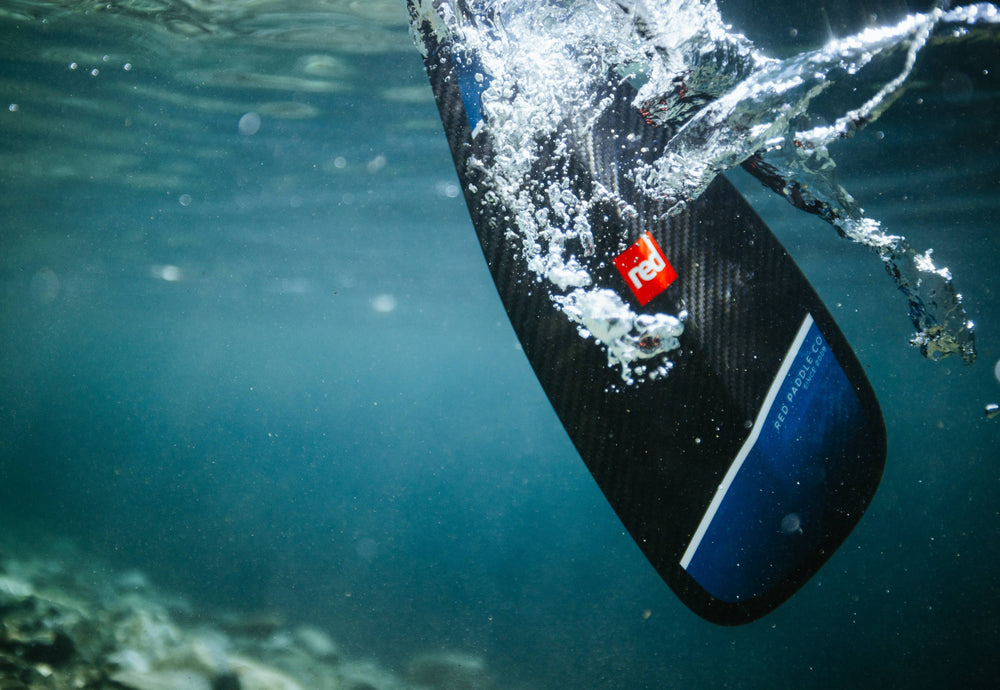
Written by Lydia Burdett /
If you've gotten the hang of the basics of stand up paddle boarding and you’re looking to up your game, then you’re in the right place. There’s a lot to learn when it comes to mastering advanced techniques to pull off with your inflatable paddle board, but they can seriously improve your skills and confidence on the water and push your performance to the next level. In this guide, we’ll detail an advanced stand up paddle board paddle technique selection, including how they’re used and the best situations to make use of them in.
The core of all stand up paddle board paddle technique and one of the most crucial skills to master is proper SUP posture. It provides you with an efficient base to maximise your control, balance and stamina. This is a technique that you should be using in any situation, so practise it often.
Keep your feet shoulder-width apart and your knees bent slightly to better brace yourself for motion. You should be centred over the handle of your inflatable paddle board, and your eyes should be looking forward, not down. This will help you maintain an accurate sense of direction and aid your stability. Ensure that your posture is simultaneously upright but relaxed. Your back should be kept straight, but if you become too rigid, you’ll lose a lot of power and end up with a much greater risk of injury to yourself.
When making strokes, your top arm should be straight and the lower one slightly bent. The angle of the blade should face away from you at all times. This will reduce fatigue and the risk of injuring yourself, as well as make it easier to transition between different strokes.
The J-stroke is a common SUP paddle technique for moving straight ahead efficiently without constantly changing which side you’re using. It’s subtle rather than particularly powerful and suited more to longer and more relaxing paddles than races.
Begin making a regular forward stroke, but as the paddle reaches your hip, twist your wrist slightly outwards to create a ‘J’ shaped stroke. The flick at the end counters the slight turn that your inflatable paddle board would normally take when making a forward stroke. There’s a particular subtlety to this that will take time to master. If you perform it too forcefully, it will lead to overcorrection and zigzagging through the water, which is less than ideal.
The C-Stroke stand up paddle board paddle technique, on the other hand, is all about powerful turning launches and tight manoeuvring, which means it's a bit more at home in a more competitive setting.
Start with the paddle away from the nose of your inflatable paddle board, then sweep it inwards towards the board and back along the rail in a wide ‘C’ motion. The inward motion creates a strong momentum that allows you to quickly turn to the desired direction, which is ideal for making sudden adjustments in course or otherwise quickly altering your trajectory.
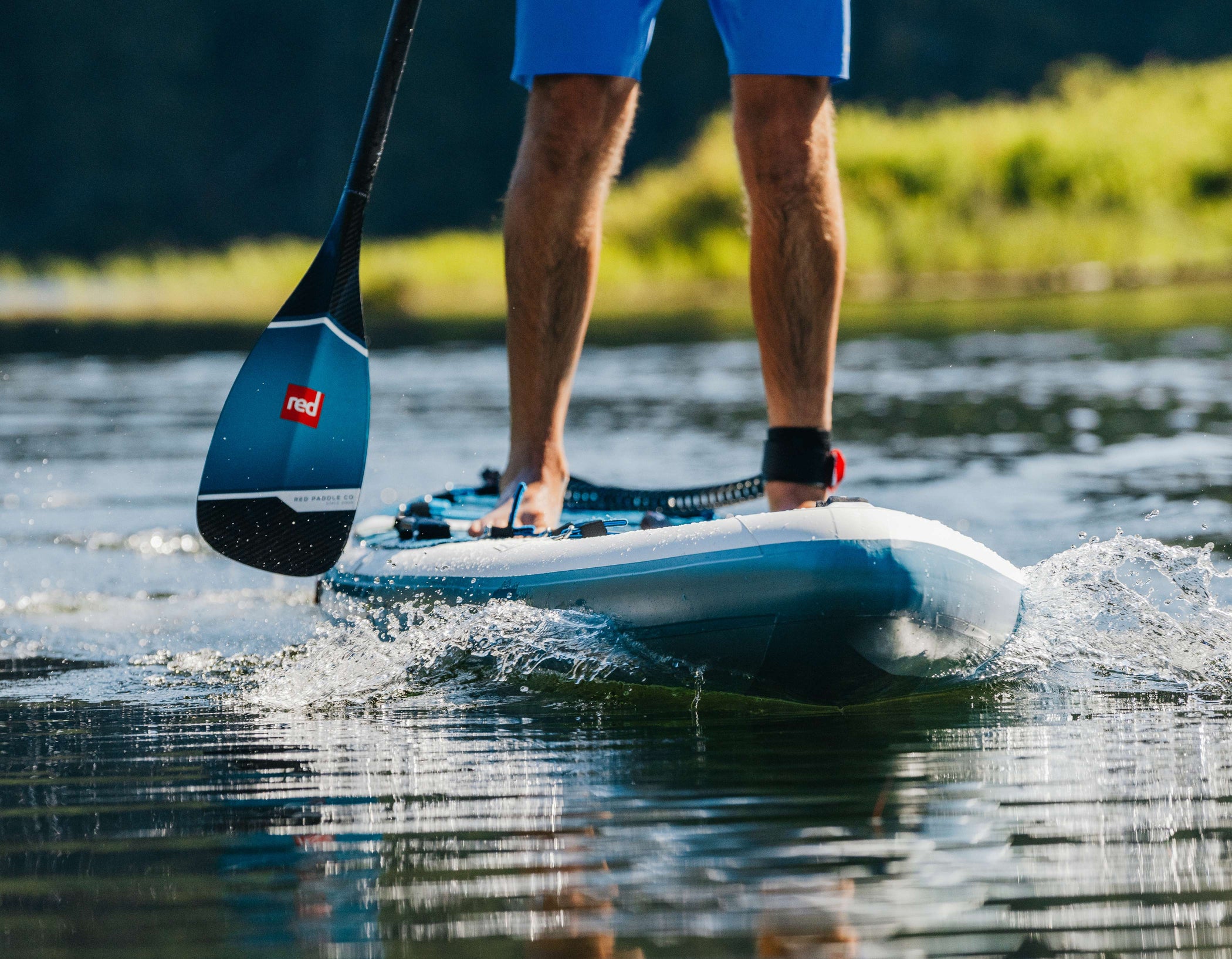
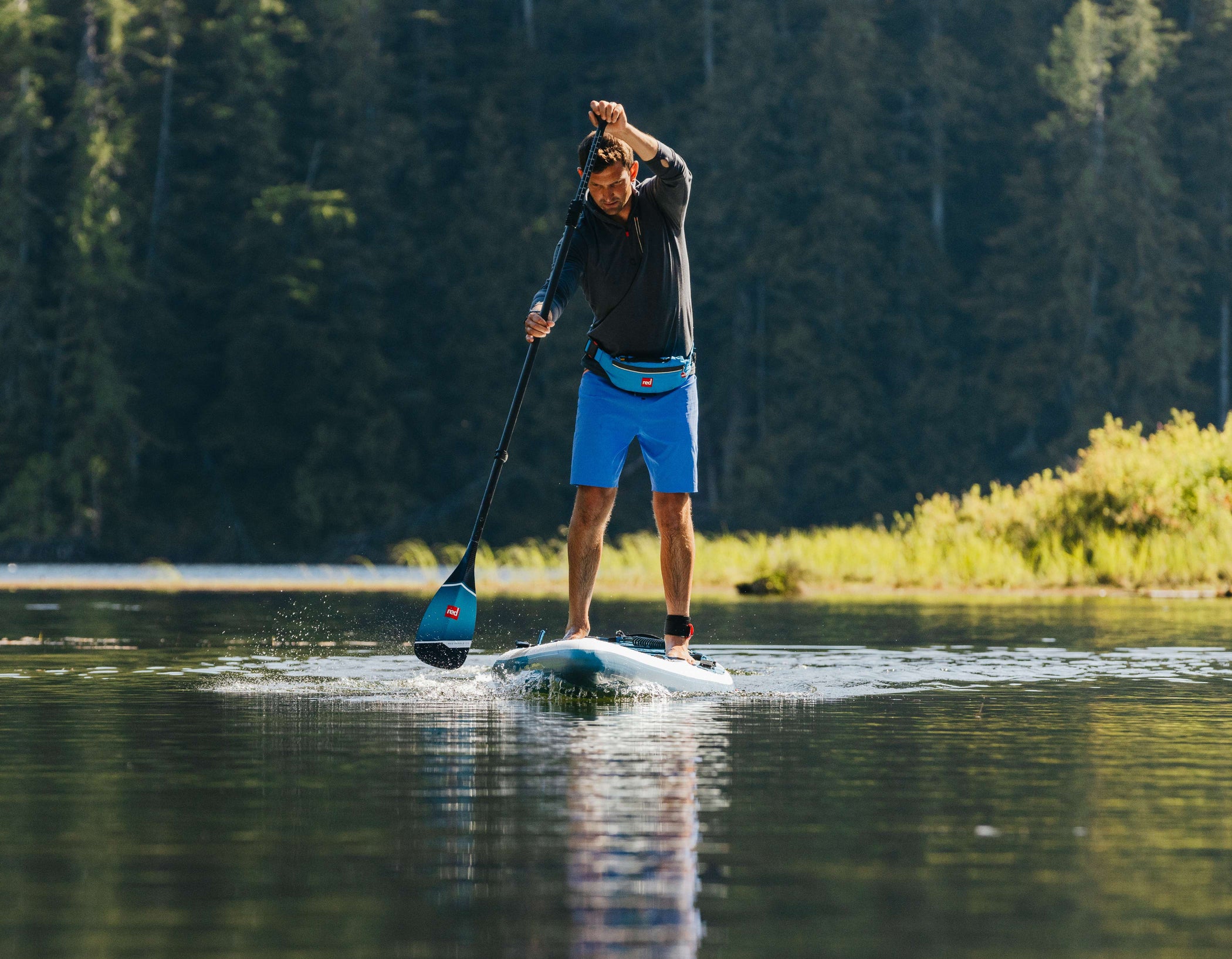
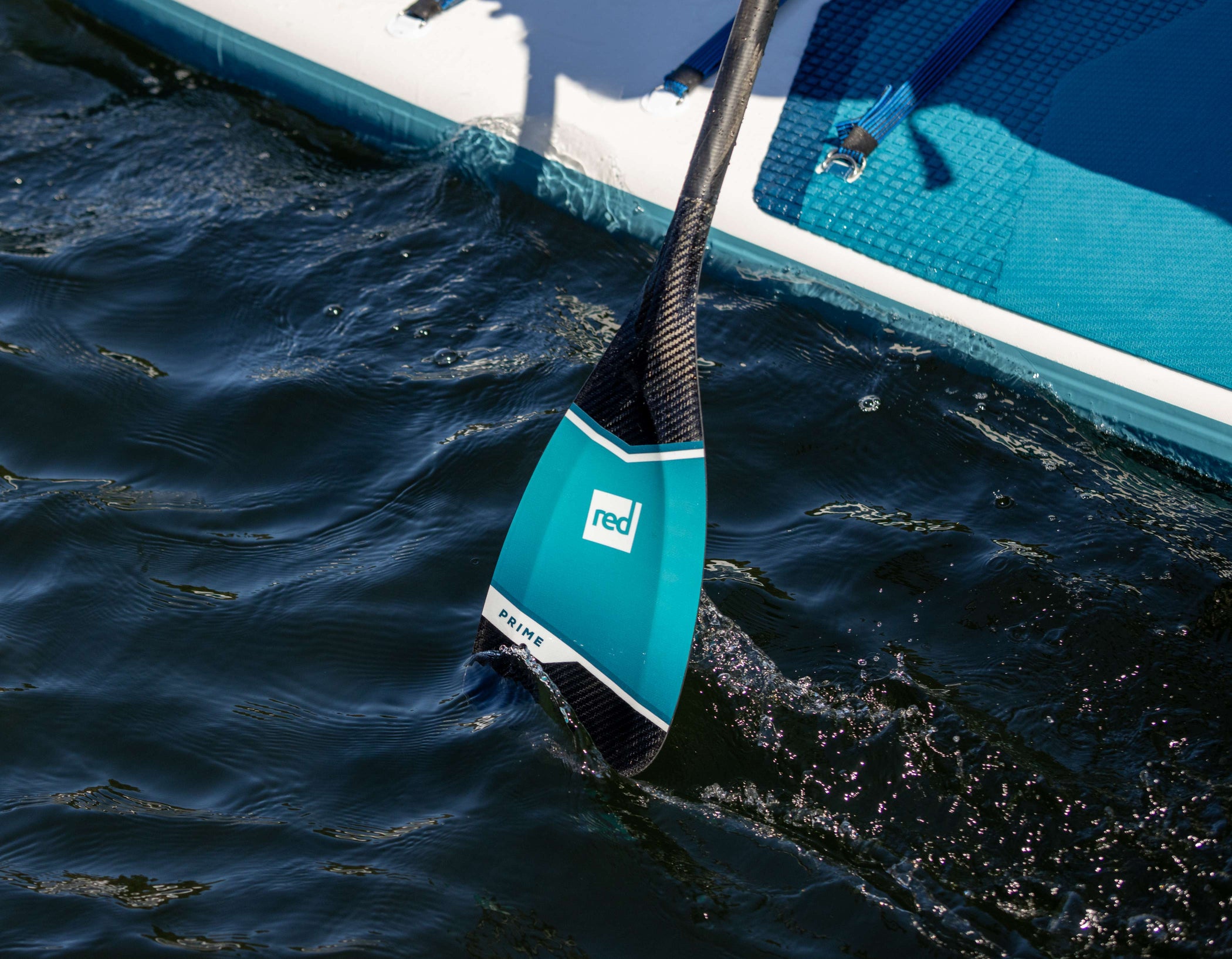
The sweep stroke is a great repositioning tool, allowing for broader turns without much forward momentum. This is a particularly useful technique to master if you’re regularly using larger boards.
Plant your paddle at the nose of your board and bring it right back to the tail in a wide arc, which will push it in the opposite direction of the paddle. The reverse sweep stroke follows a similar principle, this time starting at the tail of your inflatable paddle board and sweeping forwards to the nose, which turns the board in the same direction as the side you’re paddling on.
This is quite a complex, difficult SUP paddle technique that will take practice to get to grips with, but also massively enhances your toolkit once you’ve worked it out. The pivot turn is immensely useful in racing, SUP surfing or any other situation where high responsiveness is valuable.
Begin by stepping back a little towards the tail of your board, causing the nose to lift. The further back you step, the more the nose will rise to compensate, which will cause a bigger challenge to your balance but also enhance the speed of the manoeuvre. As the nose rises, perform a wide arcing sweep to rotate the board rapidly, and once you’re ready, step back forward to centre the board again.
The sculling draw is a stand up paddle board paddle technique that allows you to move your inflatable paddle board horizontally, which is very useful for docking or making other precisely controlled movements on the water.
Submerge the blade of your paddle on one side as vertically as you can, and then begin making a sweeping ‘S’ or figure-of-eight pattern stroke while keeping the blade at a slight angle. This will create a lateral force that will draw you in from the side. For maximum effectiveness, spend time practising making the movement as smooth and continuous as possible and focus on ensuring the angle of the blade remains the same.
The cross-bow draw stroke is another efficient way to turn your inflatable paddle board. It’s quick and efficient and shows off a great mastery of subtle stroke technique. If you’re in a race or surfing scenario, this isn’t a bad trick to have up your sleeve.
From your paddling stance, rotate your body to bring your paddle across the nose of the board to the other side and then plant the blade. Then pull it towards the nose to bring the board in the direction of the paddle without changing hands at any point. It’s a quick, elegant manoeuvre that allows for some agile turns.
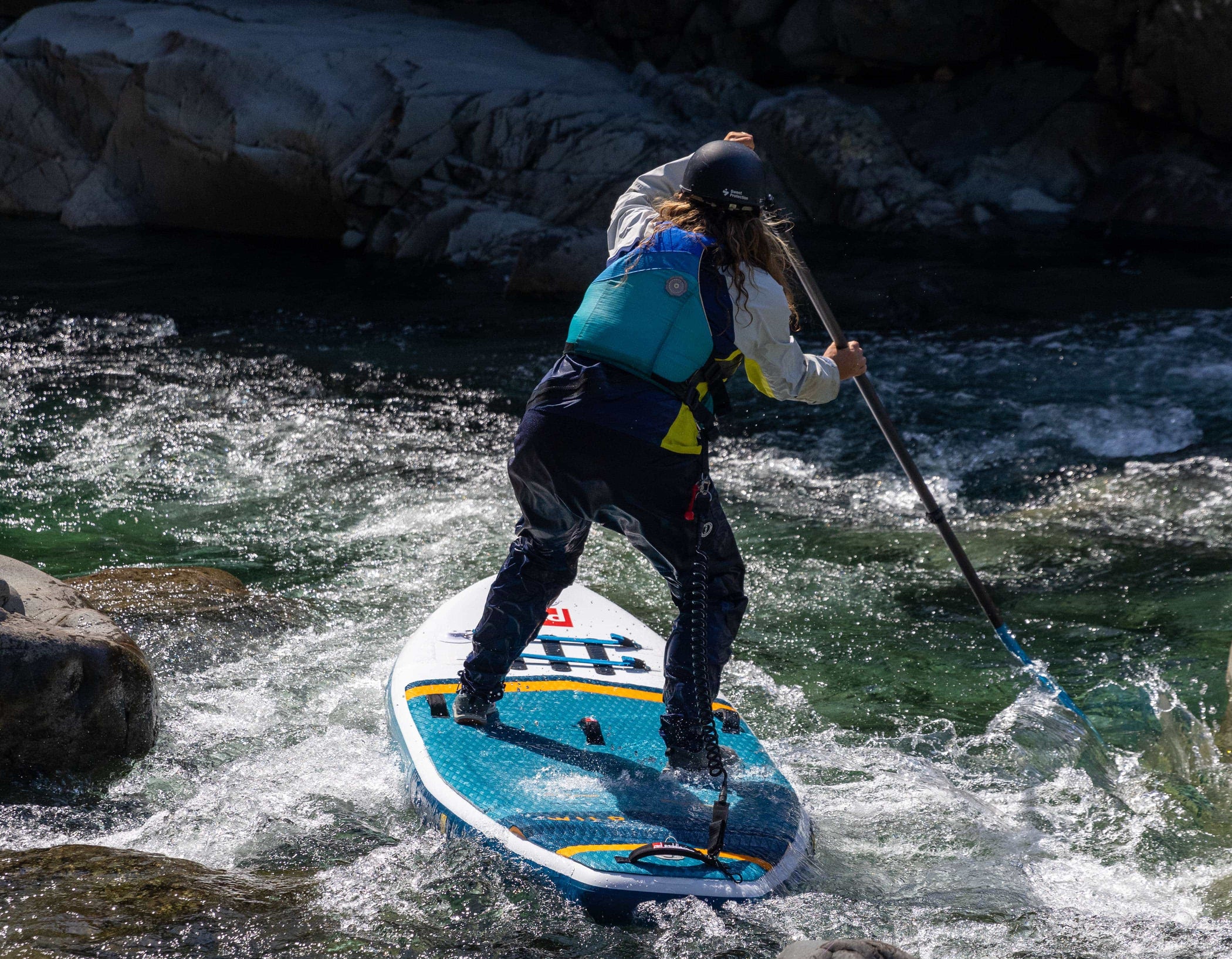
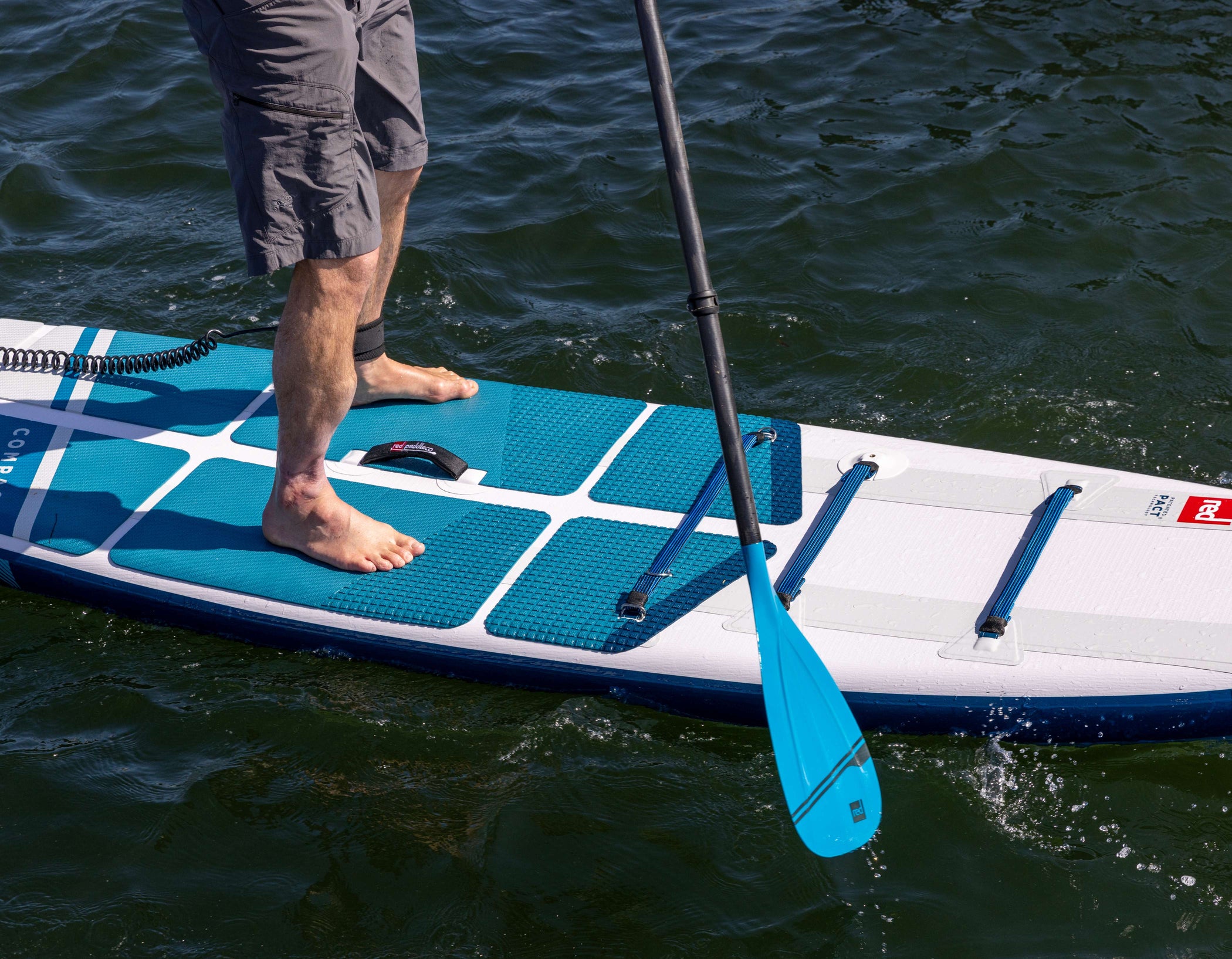
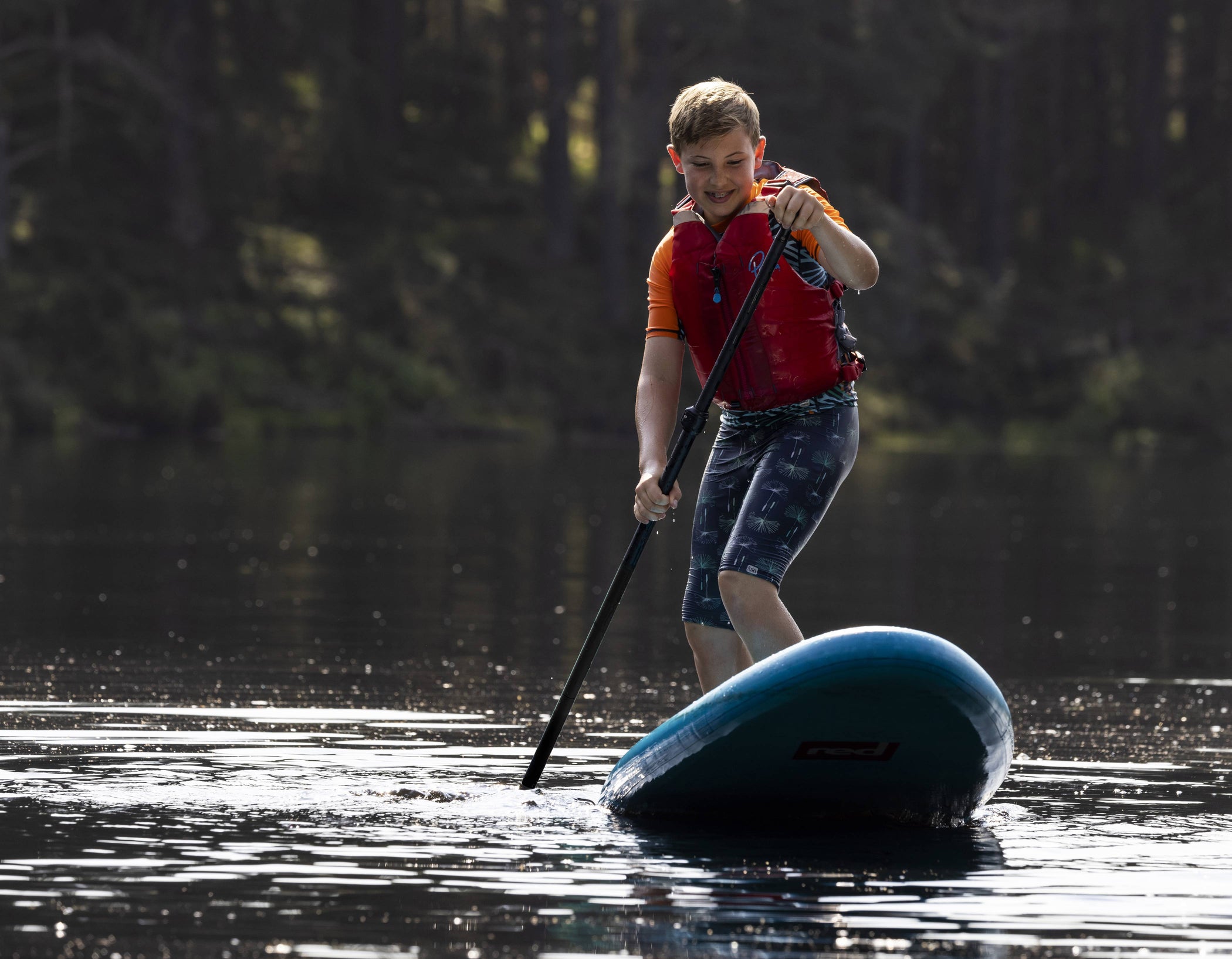
Power strokes allow you to create some real acceleration and drive, letting you pick up speed where you need to. These strokes reward good form and require a decent level of strength to effectively pull off, but can make all the difference in the right scenario - especially if you’re partial to racing or surfing with your paddle board..
The idea behind them is simple: plant the blade of your paddle firmly in the water a good distance ahead of you and then drive the stroke. This will make use of your core and your lats, relying on them to generate power. Keep the paddle straight and your top hand high to help you ensure straight and powerful strokes. Shorter and more powerful strokes will be a lot better than longer, slower ones for accelerating quickly. This kind of stroke can put a fair amount of strain on your paddle, so investing in something like a Red Prime Tough Lightweight stand up paddleboard paddle, which makes use of a carbon weave for enhanced durability, would be a good idea.
Bracing strokes are a vital recovery technique that you’ll want to master, especially if you paddle board in choppy waters or enjoy SUP surfing. Whether you prefer a low brace or a high brace, they help you keep your balance and prevent falls if you find yourself tipping. This is a technique that you shouldn’t count on using often, but it will be great knowledge to pull out when things get a little dicey on the water.
The more common low brace requires you to keep your knees bent and weight centred to help you regain control, and for you to hold your paddle horizontally across your body. As you feel yourself tip, slap the paddle against the water, which will create significant resistance and help you stabilise. A high brace works similarly, except you keep the paddle higher and angled downward. Which you choose is a matter of preference and comfort.
The last stand up paddle board paddle technique we’ll talk about is race stroke form. Refined technique allows a competitive paddler to conserve energy and maximise performance on the water.
Always start with a strong ‘catch’ - where you plant your paddle far forward and submerge it with minimal splash. Make use of your core to create a powerful launch as you pull it back to your feet quickly and prepare for the next stroke. Maintain a high rhythm (60-80 strokes a minute or so) and make use of a variety of techniques to track straight and quickly, using efficient turns to quickly manoeuvre when needed. With enough practice, this inflatable paddle board form will feel totally natural.
Spending time refining your stand up paddle board paddle technique is a great way to improve your own efficiency on the water in a variety of different SUP scenarios and raise your confidence on the water. Whether you’re paddling on calm lakes or choppy ocean waves, a strong command of various inflatable paddle board techniques is sure to come in handy.
If you require any assistance from the Red team with any of our products, don’t hesitate to get in touch today for expert advice. Our team will be more than happy to lend you a hand in finding the exact SUP equipment that you require and help you make the most informed choices.
Spend $150 more for free delivery
Your bag is currently empty.
Creating an account has many benefits: